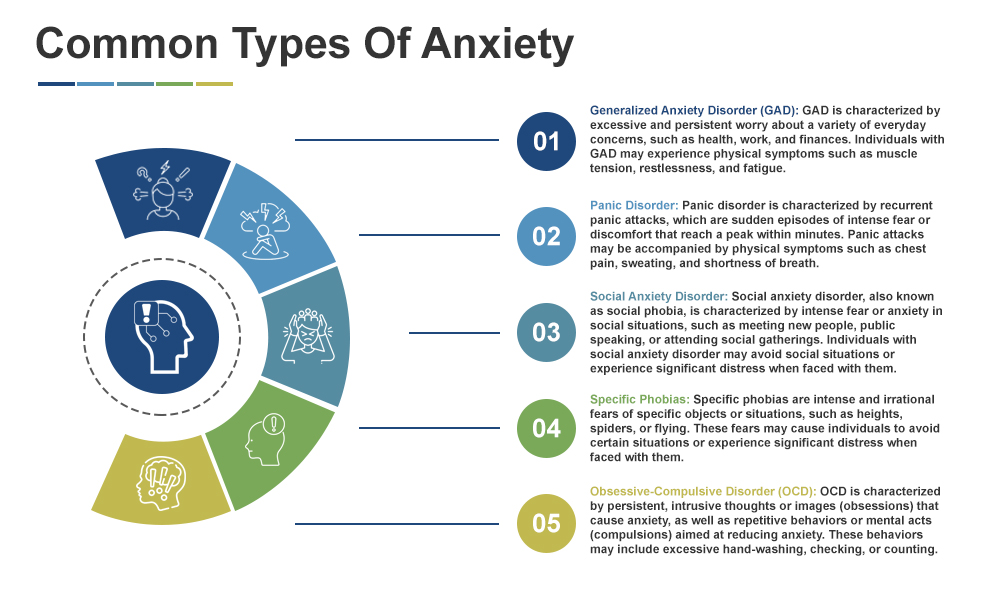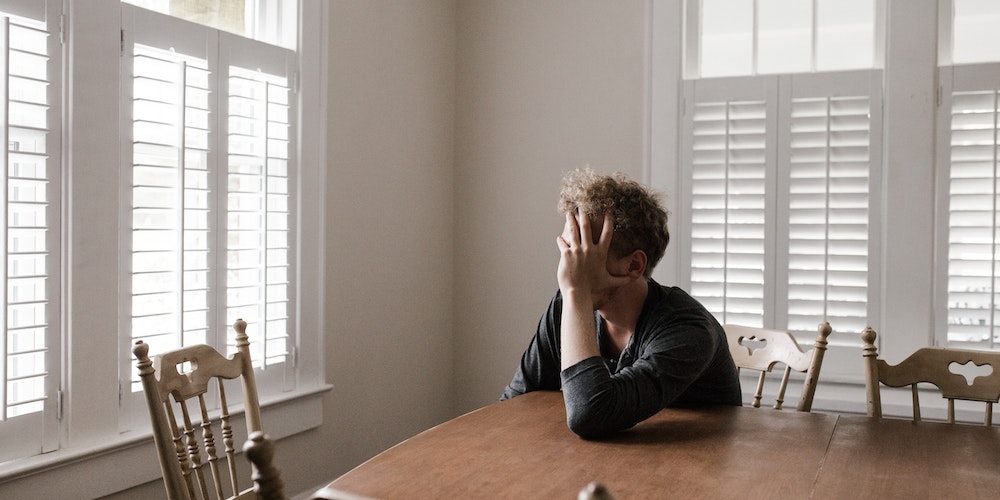Anxiety can qualify for disability benefits if it meets the criteria established by the Social Security Administration (SSA) for Social Security Disability Insurance (SSDI) or Supplemental Security Income (SSI). Here are the criteria that the SSA considers when evaluating a claim for anxiety:
- Severe anxiety symptoms: To qualify for disability benefits, you must have severe anxiety symptoms that significantly impact your ability to function. These symptoms may include constant worrying, panic attacks, difficulty concentrating, irritability, and avoidance of social situations.
- Medical evidence: The SSA will review your medical records to determine the severity of your anxiety symptoms. This may include psychiatric evaluations, therapy notes, and medication history.
- Duration of symptoms: Your anxiety symptoms must have lasted, or be expected to last, for at least 12 months.
- Work limitations: Your anxiety symptoms must limit your ability to perform basic work activities, such as following instructions, working with others, and adapting to changes in the workplace.
- Other factors: The SSA will also consider other factors, such as your age, education, and work history, when evaluating your claim for disability benefits.
It’s important to note that meeting these criteria does not guarantee approval for disability benefits. The SSA considers each claim on a case-by-case basis and evaluates all the evidence before making a determination on eligibility.
If you have been diagnosed with anxiety and believe that you may qualify for disability benefits, you should consult with a qualified Social Security attorney or representative to help you prepare your claim and represent you throughout the application and appeals process.
Is Anxiety A Disability?
Anxiety can be considered a disability if it meets the criteria established by the Social Security Administration (SSA) for Social Security Disability Insurance (SSDI) or Supplemental Security Income (SSI). To qualify for disability benefits, you must have severe anxiety symptoms that significantly impact your ability to function and meet other eligibility criteria established by the SSA.
However, it’s important to note that not everyone with anxiety will qualify for disability benefits. The severity of symptoms and the impact on daily functioning vary from person to person. Some individuals with anxiety may be able to manage their symptoms and continue to work, while others may require support or accommodations in the workplace.
If you have anxiety and are experiencing difficulty functioning in your daily life, you may benefit from seeking treatment and support from mental health professionals. Additionally, you may consider consulting with a qualified Social Security attorney or representative to help you determine if you meet the criteria for disability benefits and guide you through the application and appeals process if necessary.
Common Types Of Anxiety
There are several common types of anxiety disorders, each with its own set of symptoms and diagnostic criteria.

Here are some of the most common types of anxiety:
- Generalized Anxiety Disorder (GAD): GAD is characterized by excessive and persistent worry about a variety of everyday concerns, such as health, work, and finances. Individuals with GAD may experience physical symptoms such as muscle tension, restlessness, and fatigue.
- Panic Disorder: Panic disorder is characterized by recurrent panic attacks, which are sudden episodes of intense fear or discomfort that reach a peak within minutes. Panic attacks may be accompanied by physical symptoms such as chest pain, sweating, and shortness of breath.
- Social Anxiety Disorder: Social anxiety disorder, also known as social phobia, is characterized by intense fear or anxiety in social situations, such as meeting new people, public speaking, or attending social gatherings. Individuals with social anxiety disorder may avoid social situations or experience significant distress when faced with them.
- Specific Phobias: Specific phobias are intense and irrational fears of specific objects or situations, such as heights, spiders, or flying. These fears may cause individuals to avoid certain situations or experience significant distress when faced with them.
- Obsessive-Compulsive Disorder (OCD): OCD is characterized by persistent, intrusive thoughts or images (obsessions) that cause anxiety, as well as repetitive behaviors or mental acts (compulsions) aimed at reducing anxiety. These behaviors may include excessive hand-washing, checking, or counting.
It’s important to note that anxiety disorders can vary in severity and impact on daily functioning. If you believe that you may be experiencing symptoms of an anxiety disorder, it’s important to consult with a mental health professional for an accurate diagnosis and appropriate treatment.
How Can You Get a Disability For Anxiety?
To get a disability for anxiety, you must meet the eligibility criteria established by the Social Security Administration (SSA) for Social Security Disability Insurance (SSDI) or Supplemental Security Income (SSI). Here are the steps to apply for disability benefits for anxiety:
- Gather medical documentation: You will need to provide medical documentation that supports your diagnosis of anxiety and its severity. This may include psychiatric evaluations, therapy notes, and medication history.
- Complete the application: You can apply for disability benefits online, by phone, or in person at your local Social Security office. Be sure to provide as much information as possible about your anxiety symptoms and their impact on your ability to work.
- Cooperate with medical evaluations: The SSA may require you to undergo additional medical evaluations to assess the severity of your anxiety symptoms and their impact on your daily functioning.
- Wait for a decision: The SSA will review your application and medical documentation to determine whether you meet the eligibility criteria for disability benefits. If your claim is approved, you will receive monthly disability payments. If your claim is denied, you have the right to appeal the decision.
It’s important to note that getting a disability for anxiety can be a complex and time-consuming process. Consulting with a qualified Social Security attorney or representative can help you prepare your claim and represent you throughout the application and appeals process.
Criteria For Getting Disability with Anxiety
To get a disability with anxiety, you must meet the eligibility criteria established by the Social Security Administration (SSA) for Social Security Disability Insurance (SSDI) or Supplemental Security Income (SSI). Here are the criteria for getting a disability with anxiety:
- Diagnosis: You must have a medical diagnosis of an anxiety disorder, such as generalized anxiety disorder, panic disorder, social anxiety disorder, or obsessive-compulsive disorder.
- Severity: Your anxiety disorder must be severe enough to significantly impair your ability to perform basic work-related activities, such as concentrating, interacting with others, or completing tasks.
- Duration: Your anxiety disorder must have lasted or be expected to last for at least 12 months or result in death.
- Medical documentation: You must provide medical documentation, such as psychiatric evaluations, therapy notes, and medication history, that supports your diagnosis and its severity.
- Work history: You must have a work history that shows that you are unable to perform substantial gainful activity due to your anxiety disorder.
It’s important to note that meeting these criteria does not guarantee that you will be approved for disability benefits. The SSA will review your application and medical documentation to determine whether you meet the eligibility criteria. Consulting with a qualified Social Security attorney or representative can help you prepare your claim and represent you throughout the application and appeals process.
How Much Is A Disability Check For Anxiety?
The amount of a disability check for anxiety will depend on several factors, including your work history, income, and the type of disability benefit you receive. Here’s what you need to know:
- Social Security Disability Insurance (SSDI): The amount of your monthly SSDI payment will depend on your average lifetime earnings. In 2022, the average monthly SSDI payment is $1,330.
- Supplemental Security Income (SSI): SSI payments are based on financial need and are adjusted each year based on the cost of living. In 2022, the maximum monthly SSI payment for an individual is $794, and for a couple is $1,191.
It’s important to note that your disability payment may be reduced if you receive other sources of income or support, such as workers’ compensation, state disability benefits, or public assistance. Additionally, your payment may be subject to federal and state taxes, depending on your total income.
It’s also important to note that getting disability benefits for anxiety can be a complex and time-consuming process. Consulting with a qualified Social Security attorney or representative can help you prepare your claim and represent you throughout the application and appeals process.







